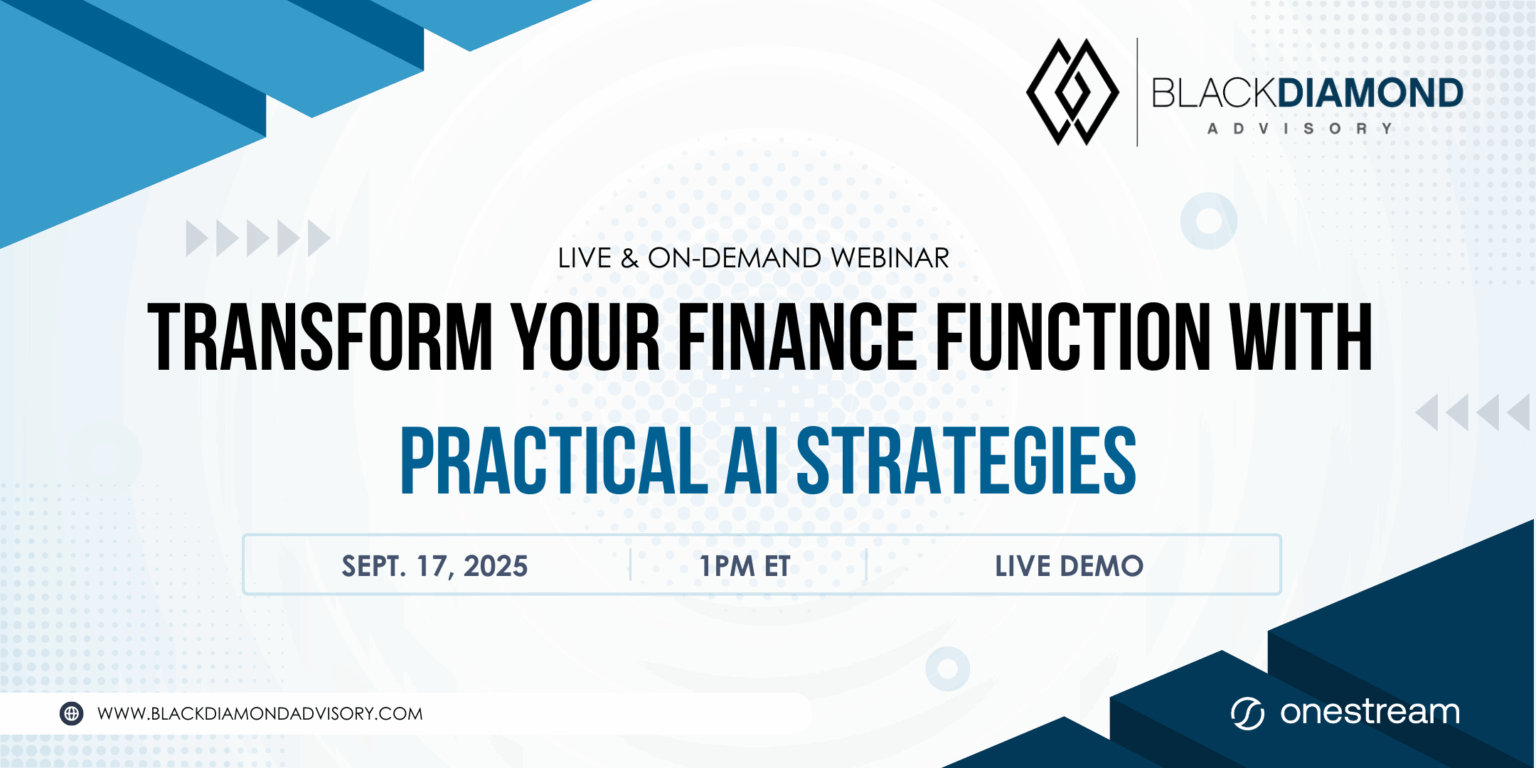A 4-minute read for finance leaders navigating the AI transformation journey
The numbers are sobering: despite billions invested in AI technology, nearly 70% of finance AI initiatives fail to deliver expected value. The culprit isn’t poor technology—it’s a fundamental education gap that leaves finance professionals unable to leverage these powerful tools effectively.
“The primary reason AI initiatives fail in finance is not technology limitations. It’s lack of organizational understanding,” explains Randy Werder, who has guided dozens of Fortune 500 finance transformations.
This education gap manifests in three specific challenges I’ve observed across organizations:
The Translation Problem
Finance speaks the language of margins, cash flow, and capital allocation. IT speaks of algorithms, models, and neural networks. Without a common vocabulary, productive conversations become impossible.
A global consumer goods company learned this lesson the expensive way—investing millions in an advanced AI forecasting solution that, six months after implementation, less than 15% of their finance team was actually using. The technology worked perfectly; it just wasn’t being used because nobody understood how it would make their jobs easier and more impactful.
Misaligned Expectations
When finance leaders don’t understand AI’s capabilities and limitations, they either expect too much (thinking AI is magic) or too little (seeing it as just another incremental tool). Either way, disappointment follows.
As one CFO confided, “We spent months defining requirements for our AI system, only to discover later we were asking for things that were either technically impossible or solving problems we didn’t actually have.”
Adoption Resistance
Without understanding “what’s in it for me,” finance professionals often view AI tools as threats or burdens rather than enablers. This resistance isn’t irrational—it’s a natural response to change without clear personal benefit.
The Three-Phase Education Approach
Effective AI education for finance isn’t about turning everyone into technical experts. It’s about building sufficient literacy to enable informed decisions and effective application.
Phase 1: Foundational Understanding
Start with basics in business terms, not technical jargon:
- What AI can and cannot do in finance contexts
- The difference between automation, analytics, and AI
- How AI learns from data and improves over time
- Common finance use cases with proven value
A pharmaceutical client began their AI journey with lunch-and-learns focused not on technology but on specific finance problems and how AI approaches them differently than traditional methods. Attendance was voluntary but consistently high because the content was immediately relevant.
Phase 2: Practical Application
Once the foundation is established, move to hands-on understanding:
- How to interpret AI-generated insights
- When to trust the system and when to apply judgment
- How to provide feedback that improves model performance
- Common pitfalls and how to avoid them
- Maintaining data security and compliance
One retail organization created a “sandbox” environment where finance professionals could experiment with AI capabilities using historical data without affecting production systems. This risk-free environment dramatically accelerated adoption.
Phase 3: Strategic Integration
The final phase connects AI capabilities to strategic finance transformation:
- How AI changes the finance operating model
- New roles and responsibilities in an AI-enabled organization
- Managing the partnership between human judgment and machine learning
- Measuring value creation from AI investments
A manufacturing client created a finance AI center of excellence with representatives from each finance function. This group received advanced training and became internal advocates, dramatically accelerating adoption across the organization.
Education Methods That Actually Work
The approach matters as much as the content. These methods deliver the best results:
Scenario-Based Learning: Abstract explanations rarely stick. Use realistic finance scenarios to illustrate how AI approaches problems differently. Show side-by-side how a traditional forecast compares to an AI-driven forecast, highlighting differences in approach and outcomes.
Progressive Exposure: Don’t try to cover everything at once. A utility company began with simple anomaly detection in accounts payable before moving to more complex revenue forecasting applications.
Peer-to-Peer Learning: Nothing builds confidence like seeing peers successfully apply new capabilities. The questions that arise are more relevant when they come from someone in the same role.
Just-in-Time Learning: A financial services client embedded short video tutorials directly in their AI tool, accessible at the point of need. Learning at the moment of application creates stronger retention than classroom training.
Measuring Educational Readiness
How do you know if your education efforts are working? Look for these indicators:
- Language Shift: Finance teams start using AI concepts correctly in everyday conversations.
- Question Evolution: Initial questions focus on “what” and “how.” As understanding grows, questions shift to “why” and “what if.”
- Proactive Experimentation: Teams begin identifying new use cases and testing capabilities on their own.
- Reduced Resistance: Proposed AI initiatives are met with curious inquiry rather than defensive skepticism.
A telecommunications client created a simple AI literacy assessment that measured understanding before and after their education program. Their finance team’s literacy increased from 22% to 78% over six months, directly correlating with successful adoption of new AI tools.
The Competitive Advantage of Finance AI Literacy
The sustainable advantage in AI doesn’t come from technology, which eventually equalizes across companies. It comes from organizational understanding that enables effective application.
Finance organizations that invest in comprehensive education consistently outperform those focused exclusively on technology implementation. They achieve higher adoption rates, faster time to value, and more innovative applications.
Remember: The most sophisticated AI technology in the world creates zero value if your finance team doesn’t understand how to apply it effectively. Education isn’t a nice-to-have—it’s the foundation of successful transformation.


